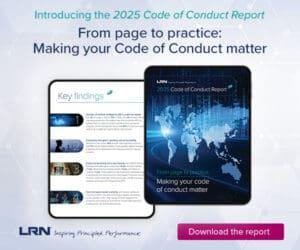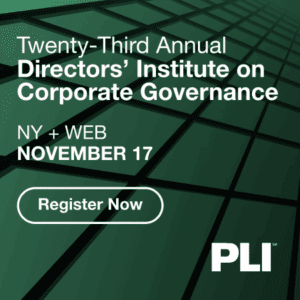Technology is the future, and the future is now. Oracle’s Sonny Singh discusses how banks are using emerging technologies such as machine learning and graph analytics to improve financial crime investigations and compliance management.
The complexity and cost of battling fraud, money laundering and other types of financial crime continues to compound for large enterprises – especially financial institutions. Criminals constantly hone their tactics and invent new ones. Transactions grow exponentially in volume and speed, compliance requirements escalate and there’s no pause in sight.
Firms are looking to stem the tide on two fronts: increasing the speed and accuracy of detection and improving the overall efficiency of their investigation and compliance processes.
The evolution of big data and machine learning (ML) technology is coming to bear on both challenges. Here is where we are and where technology is taking the financial industry in these critically important areas.
Economics and Criminal Sophistication Demand Greater Efficiency and Accuracy
The stakes of compliance are high and getting higher, driven by both the sheer number of regulatory changes financial firms need to track and heed and the extreme cost to compliance.
The RegTech Council reported a Bain & Co. estimate that governance risk and compliance spend accounts for 15 to 20 percent of “run the bank” cost and 40 percent of “change the bank costs.” In raw numbers, banks spent more than $100 billion on regulatory compliance in 2016 alone, and the cost is rising.[1] As important, these costs do not account for direct financial losses resulting from fraud or those attributed to reputational damage from a high-profile fraud or money-laundering event.
Financial firms facing rising costs associated with risk and compliance responsibilities are logically focused on boosting the efficiency and accuracy of their investigations. They are compelled to innovate their means of financial crime detection while simultaneously reducing false positives and their associated costs.
Technology provides many levers to enable higher levels of efficiency and accuracy, but many legacy rules-based technologies have topped out.
To go to the next level, financial firms need to effectively tap and leverage all relevant data sources from across the enterprise and incorporate a growing number of external data sources. Equally important, they need the ability to determine context and gain actionable insight from this data in near real time. Advances in graph analytics and machine learning (ML) – including artificial intelligence (AI) and natural language processing capabilities ‒ are poised to provide astute organizations with that context while boosting efficiency and accuracy alike.
Next-Level Defense: Graph Analytics
Spatial and graph analysis can discover connections between multiple data points in ways that traditional, relational databases cannot – especially when analyzing data that has been stored for decades in a variety of platforms both inside and external to an enterprise.
At its heart, graph analytics builds on identified pair-wise connections between people, transactions and/or events. It then maps them based on shared structural characteristics and applies analytic tools to determine the strength and direction of relationships between indirectly connected objects in the graph. Graph analytics will put a graph overlay on top of existing data stores; in other words, it leverages big data technology rather than replacing it, combining with data visualization and scenario authoring.
Using graph analytics, for example, enterprises can more readily create and visualise entities (often known as “pseudo clients” if related to individuals) for anti-money laundering monitoring and surveillance purposes based on common data attributes (such as common addresses/names in payments) and use graph technology to link them all together with “real” bank customers/transactions/correspondent banks to look for financial crime patterns and behaviors. Graph technology provides unprecedented context and better visibility ‒ and, therefore, better governance and oversight ‒ as well as the ability to flag a client as being higher risk or part of a potential criminal network.
Compare this approach to current processes in most institutions that rely on traditional rules-based monitoring and transaction filtering. These processes have proven easier to circumnavigate by manually removing certain data points, in payments for example, that the systems historically looked for to identify potential suspicion or even sanctions.
With graph analytics, firms can work with billions of transactions; add in other data (for example, instant message and telephone call data); quickly determine who communicated with whom, when and about what; and then map that to a specific transaction or trade records. In doing so, graph analytics potentially eliminates immense amounts of manual and analog investigation and yields more accurate results.
Emergence of Big Data and AI as Compliance Tools
To ferret out money-laundering and fraud activity, most organizations today work with a set of static scenarios, but the number and types of actual scenarios criminals apply change continuously. AI promises to help firms improve the accuracy and efficiency of crime detection and compliance procedures by learning from analysts’ previous decisions and/or their risk appetite and policies to proactively propose improvements to screening rules and processes.
Process automation/event scoring and ML can update event ratings in the initial screening step and reduce investigator time demands by using graph pattern matching to complete the link analysis that historically has been done manually. It can also update customer risk scoring and generate direct process steps, such as moving a customer to the appropriate enhanced due diligence queue, to accelerate the final business decision.
There is a remaining rub, of course, with AI modeling and ML processes: They are a black box and difficult to explain to regulators accustomed to reviewing lines of code in legacy static models. However, work is under way to enhance the lucidity of AI processes and decisions, and we expect significant progress in this area to continue.
The Effect on False Positives and Costs
The strongest driver behind AI in financial crime detection and compliance is its potential to reduce the number of false-positive alerts that emerge from screening processes and require manual investigation, thereby improving the accuracy and efficiency of the entire process.
For example, an ML algorithm could review a 10-year history of alerts, analyze the productive and nonproductive ones, and – learning from that – generate a more accurate process for analyzing data that results in fewer erroneous alerts moving forward. This could ensure that discoveries are more actionable and operational.
As experience increases with overlaying AI, ML and graph analytics on big data infrastructure, these technologies will gain regulator confidence and increase the efficiency of detection and investigation.
The Future is Here
Risk and compliance professionals should begin to assess and plan how they can best leverage comprehensive data science toolkits and financial crime and compliance solutions that support graph analytics, visualization and ML. Solutions should be compatible with leading distributions of platforms such as Apache Hadoop, Apache Spark and Apache Zeppelin, R and Python to offer quick integration with existing data lake infrastructure technologies.
Financial services firms have invested billions in technology and analytics over the years. The beauty of graph analytics and ML is that in many instances they can build on a firm’s existing foundation, if that foundation is solid. This is the future of financial crime and compliance technology, and it is here.
[1] Forbes, “Taming the High Costs of Compliance With Tech,” Tom Groenfeldt, March 22, 2018.



 Sonny Singh is Senior Vice President and General Manager of the Financial Services Global Business Unit at Oracle, where he has served since 2013. In this role, Singh has worldwide responsibility for Oracle’s product portfolio for the financial services industry across banking, insurance, and capital markets. His organization spans all business functions including product strategy, research and development, mergers and acquisitions (M&A), sales, consulting, marketing and customer service. In addition, his operational responsibilities include Oracle Financial Services Software (OFSS), a publicly held company, where he is a member of the board of directors.
Prior to his current role, Singh was the Senior Vice President responsible for all functions in Oracle's go-to-market strategy, including product marketing, competitive intelligence, field enablement and M&A integration across Oracle's entire product and services portfolio. His organization delivered all of Oracle's strategic customer engagement capabilities, including solutions and expertise for all industry vertical segments; the Oracle Insight program, Oracle's branded value engineering competency; and Oracle Solution Centers. Additionally, his organization was responsible for the expert resources, tools and capabilities for two key market segments: Oracle Key Accounts and Midsize.
Prior to that, Singh was Group Vice President for Oracle Consulting, where he led Oracle’s services business in North America Strategic Accounts. Singh began his Oracle career in 1990 and has had held a number of leadership roles in Oracle’s consulting and sales organizations, focusing on Oracle Applications.
Singh holds an M.S. in Industrial Engineering from Stanford University and a B.S. in Mechanical Engineering from Punjab University, India.
Sonny Singh is Senior Vice President and General Manager of the Financial Services Global Business Unit at Oracle, where he has served since 2013. In this role, Singh has worldwide responsibility for Oracle’s product portfolio for the financial services industry across banking, insurance, and capital markets. His organization spans all business functions including product strategy, research and development, mergers and acquisitions (M&A), sales, consulting, marketing and customer service. In addition, his operational responsibilities include Oracle Financial Services Software (OFSS), a publicly held company, where he is a member of the board of directors.
Prior to his current role, Singh was the Senior Vice President responsible for all functions in Oracle's go-to-market strategy, including product marketing, competitive intelligence, field enablement and M&A integration across Oracle's entire product and services portfolio. His organization delivered all of Oracle's strategic customer engagement capabilities, including solutions and expertise for all industry vertical segments; the Oracle Insight program, Oracle's branded value engineering competency; and Oracle Solution Centers. Additionally, his organization was responsible for the expert resources, tools and capabilities for two key market segments: Oracle Key Accounts and Midsize.
Prior to that, Singh was Group Vice President for Oracle Consulting, where he led Oracle’s services business in North America Strategic Accounts. Singh began his Oracle career in 1990 and has had held a number of leadership roles in Oracle’s consulting and sales organizations, focusing on Oracle Applications.
Singh holds an M.S. in Industrial Engineering from Stanford University and a B.S. in Mechanical Engineering from Punjab University, India. 








